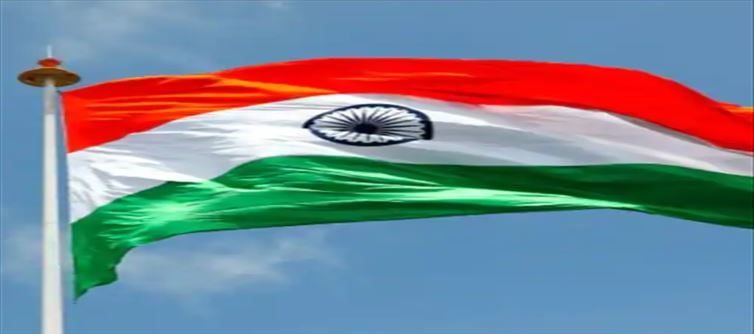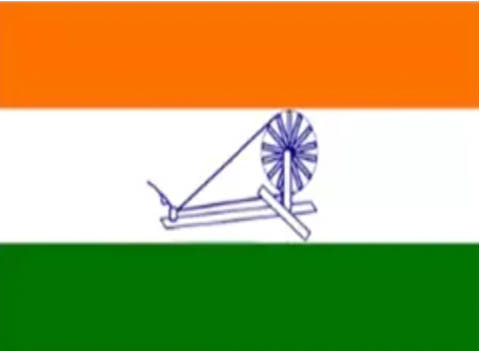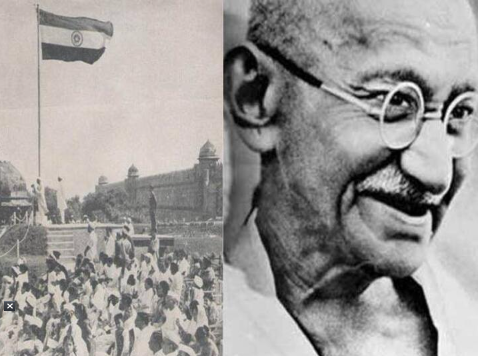
On this special day, we will see the history of the national flag and how it evolved to these colors. Tomorrow, august 15 (Monday), india is all set to celebrate its 75th Independence Day. Modi launched the 'Har Ghar Tiranga' campaign on august 2 to encourage people to fly national flags at their homes on the occasion. On this auspicious day, let's take a look at the history of the national flag and how it evolved and reached these colors. The indian national flag had to travel through a series of variations to arrive at what it is today. The first national flag of india is said to have been hoisted on 7 august 1906 at Parsi Bagan Square (Green Park) in Kolkata, West Bengal. The national flag then consisted of three horizontal stripes of red, yellow, and green.
 The second national flag was hoisted in paris in 1907 by Madame Cama and her group of exiled revolutionaries. This flag was similar to the first flag, with no major changes. Only the lotus at the top was transformed into stars, representing Saptarishi. The third flag was hoisted by Dr. Annie Besant and Lokmanya Thilakar during the home Rule Movement in 1917. Significantly, this was the time when the political struggle in india was taking a major turn. This flag is very different from the first two. It had red and green horizontal stripes, seven stars in the Saptarishi system, with a white crescent moon.
The second national flag was hoisted in paris in 1907 by Madame Cama and her group of exiled revolutionaries. This flag was similar to the first flag, with no major changes. Only the lotus at the top was transformed into stars, representing Saptarishi. The third flag was hoisted by Dr. Annie Besant and Lokmanya Thilakar during the home Rule Movement in 1917. Significantly, this was the time when the political struggle in india was taking a major turn. This flag is very different from the first two. It had red and green horizontal stripes, seven stars in the Saptarishi system, with a white crescent moon. Meanwhile, mahatma gandhi once said why india should have its own flag, "A flag is necessary for all nations. Millions have died for it. No doubt it is a form of idolatry, but india is home to all Indians, Muslims, Christians, Jews, and Parsis. Later, a fourth flag was unofficially adopted in 1921. A youth from andhra pradesh prepared a flag and took it to mahatma gandhi during a session of the All india Congress Committee. The flag consists of two colors, red and green, representing the Hindu and Muslim communities of the country.
Meanwhile, mahatma gandhi once said why india should have its own flag, "A flag is necessary for all nations. Millions have died for it. No doubt it is a form of idolatry, but india is home to all Indians, Muslims, Christians, Jews, and Parsis. Later, a fourth flag was unofficially adopted in 1921. A youth from andhra pradesh prepared a flag and took it to mahatma gandhi during a session of the All india Congress Committee. The flag consists of two colors, red and green, representing the Hindu and Muslim communities of the country.  Gandhi added a white stripe to represent surviving communities and a spinning wheel to represent the nation's progress. It was a landmark in the history of the evolution of the indian national flag.The tricolor flag had saffron, white and green stripes centered on mahatma Gandhi's spinning wheel. It was clearly stated that the flag had no communal significance and if so understood it would have to be interpreted. Finally, the present-day tricolor came after India's independence.
Gandhi added a white stripe to represent surviving communities and a spinning wheel to represent the nation's progress. It was a landmark in the history of the evolution of the indian national flag.The tricolor flag had saffron, white and green stripes centered on mahatma Gandhi's spinning wheel. It was clearly stated that the flag had no communal significance and if so understood it would have to be interpreted. Finally, the present-day tricolor came after India's independence. Retaining the color and significance of the earlier flag, the spinning wheel of Emperor Ashoka's dharma Sarka was adopted as the symbol of the flag. Today's national flag is a horizontal tricolor with saffron at the top, white in the middle, and dark green at the bottom. A navy blue wheel symbolizing the wheel is in the middle of the white band. The saffron above represents the country's strength and courage; White represents peace and truth; And green represents the fertility, growth, and greenness of our land.
Retaining the color and significance of the earlier flag, the spinning wheel of Emperor Ashoka's dharma Sarka was adopted as the symbol of the flag. Today's national flag is a horizontal tricolor with saffron at the top, white in the middle, and dark green at the bottom. A navy blue wheel symbolizing the wheel is in the middle of the white band. The saffron above represents the country's strength and courage; White represents peace and truth; And green represents the fertility, growth, and greenness of our land.



 click and follow Indiaherald WhatsApp channel
click and follow Indiaherald WhatsApp channel